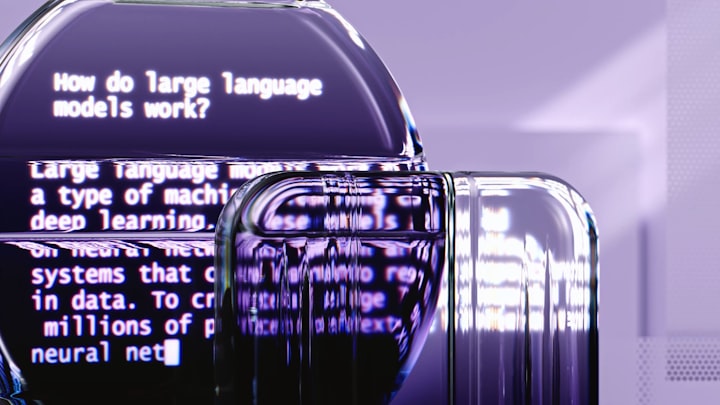What is computer vision?
Deepen your knowledge of computer vision and get clued up on popular algorithms, technologies, and their relevant uses. Let's get to it!
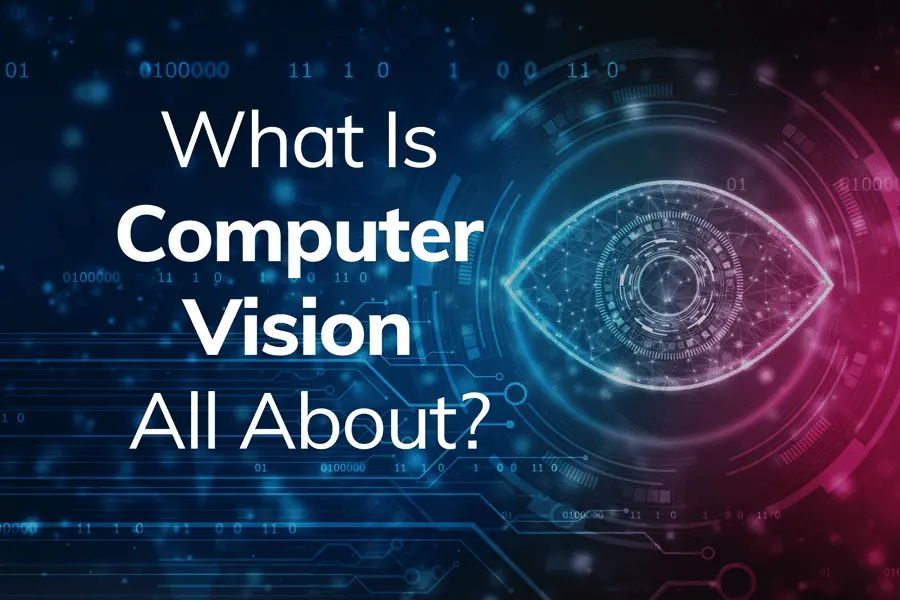
The arena of computer vision is surging into prominence at an unprecedented rate, employing intricate algorithms and avant-garde technologies to architect solutions proficient in processing and deciphering images, videos, and various forms of visual data. Immerse yourself into deeply exploring computer vision's elementary principles and stay up-to-date with cutting-edge algorithms, technologies, and diverse applications.
Utilize the power of machine learning and neural networks to empower computational systems with the proficiency to identify anomalies and malfunctions, pre-emptively mitigating their potential adverse effects on operational processes.
What is computer vision?
In technological innovation and advancement, computer vision emerges as a rapidly burgeoning discipline amalgamating the intricacies of computer science, engineering, and imaging science. This multifaceted field harnesses the power of highly sophisticated algorithms and state-of-the-art technologies to empower computers with the aptitude to comprehend and process various visual data, ranging from static images to dynamic videos.
The utility of this remarkable discipline has now permeated various application areas, including but not limited to the identification and recognition of objects, segmentation of images, the development of advanced medical imaging systems, navigation for autonomous vehicles, facial recognition technology, and the intricate process of 3D reconstruction.
The magic of computer vision lies in its ability to imbue computers with the extraordinary capability to autonomously detect and identify entities such as objects, humans, and scenes encapsulated within images or videos. Moreover, it endows computers with the skill to track moving objects continually.
The power of computer vision stems from extracting data from individual pixels. The algorithms, the heart of this technology, learn to distinguish object patterns, which may include various aspects like shapes, colors, and textures, and assimilate contextual information, such as an object's position with its surroundings.
By mimicking the human ability to interpret visual information, computer vision allows digital devices to analyze digital images or videos accurately and efficiently, akin to human perception. This groundbreaking technology is being increasingly adopted across many industries, including manufacturing and healthcare, and has become indispensable in autonomous vehicle navigation. The ascendance of computer vision underscores its pivotal role in the modern world, with its applications broadening and deepening every day.
Artificial intelligence (AI) of computer vision enables computers and systems to extract useful information from digital photos, videos, and other visual inputs and to conduct actions or offer recommendations in response to that information. If AI allows computers to think, computer vision will enable them to see, observe, and comprehend.
Human vision has an advantage over computer vision because it has existed longer. With a lifetime of context, human sight has the advantage of learning to distinguish between things, determine their distance from the viewer, determine whether they are moving and whether an image is correct.
Computer vision teaches computers to execute similar tasks using cameras, data, and algorithms instead of retinas, optic nerves, and the visual cortex in less time. For example, a system trained to inspect items or monitor a production asset can swiftly outperform humans since it can examine thousands of products or processes per minute while spotting imperceptible flaws or problems.
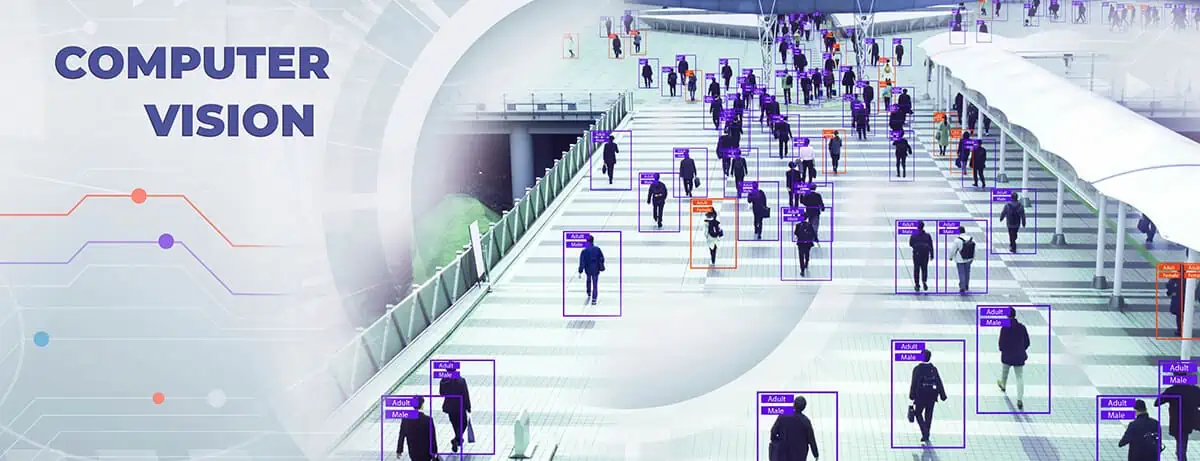

What are Image Recognition Algorithms?
Image recognition algorithms are meticulously engineered computational methodologies that recognize and categorize visual data or entities within such data. The convolutional neural network (CNN) is a ubiquitous variant of these algorithms, leveraging a unique arrangement of multilayered neurons to discern specific attributes within visual data, such as delineations and geometric forms. Other manifestations of these algorithms encompass support vector machines, fuzzy logic systems, and decision trees, each proffering a distinctive utility in object recognition contingent on the specific application.
Convolutional neural networks are the most sought-after rendition of image identification algorithms, courtesy of their superior precision in executing object recognition responsibilities. These networks are a complex concatenation of interconnected neurons, methodically organized into layers, which can be educated on a profuse collection of data to discern specific attributes. For instance, a CNN can be adeptly trained to identify human faces or other objects by scrutinizing their delineations, geometric forms, and chromatic properties. Support vector machines also capitalize on the power of multilayered systems. Still, they differ by employing mathematical models to contrast components within a visual data set and scout for patterns that earmark particular objects. Fuzzy logic systems and decision trees may not be as frequently utilized due to their comparatively inferior efficiency and precision in recognizing intricate visual data. Still, they retain their unique merits in specific contexts, such as analyzing facial expressions.
What is Neural Network Technology?
The burgeoning technology of neural networks, a preeminent algorithm within computer vision applications, is revolutionizing machine perception and artificial cognition. This algorithm, functioning through an intricate web of interconnected layers, is adept at discerning patterns and classifying an array of images and objects, thereby imbuing machines with a semblance of visual comprehension.
In the dynamic landscape of machine learning, neural network technology has witnessed a dramatic upswing, displaying a particular affinity for large, complex datasets. The multifaceted applications of this technology encompass a diverse range of tasks, such as facial recognition, object identification, image segmentation, and even the intricate domain of medical imaging analysis.
Delving deeper into the architecture of neural networks, they are an intricate assembly of multiple neuron layers, each engaging in a complex dance of data processing. Each layer harnesses the input and metamorphoses it into a new output, then routed to the subsequent layer. This chain of processing continues until the anticipated result is generated. For the specialized field of computer vision, neural networks are meticulously trained on voluminous datasets, facilitating them to 'recognize' or discern objects and images.
This pioneering technology has proven to be an indispensable tool across various sectors. For example, it is a key driver in developing autonomous vehicles and facial recognition systems, aiding in the swift and accurate identification of faces. Moreover, it's finding increasing applications in the medical field, assisting in diagnosing many diseases. Additionally, it is being harnessed to detect patterns in financial markets, aiding in more insightful and strategic decision-making. It also revolutionizes online user experiences by providing more personalized and intuitive interactions.
How is Face Recognition Used in Computer Vision?
Employing advanced machine learning paradigms and complex computational geometry, facial recognition technology represents an exemplary application of computer vision algorithms in our digital world. This cutting-edge technology harnesses the power of pattern recognition, interpreting distinctive facial attributes to identify individuals, thereby enabling seamless authentication and authorization mechanisms in both physical and digital domains. A testament to its versatility, facial recognition can detect faces within many images or continuous video streams, extracting and interpreting invaluable demographic data such as age and gender.
The ability of facial recognition to perform scaled analysis amplifies its efficacy and potential. It uses sophisticated computer vision algorithms to recognize individuals from a kaleidoscope of images captured at diverse angles under various lighting conditions. Moreover, the technology's application isn't limited to human faces; it can also track non-human objects, such as vehicles captured in a bustling traffic video stream.
This technology has a remarkable learning capability that refines its recognition accuracy over time. By continuously analyzing facial data from various environments, the system can learn, memorize, and recognize individual faces with increased precision, enhancing its accuracy with each use.
Renowned companies such as Amazon have astutely leveraged facial recognition technology in their cashier-less retail store solutions, empowering customers to shop and checkout effortlessly without needing physical human interaction. Beyond the commercial sector, law enforcement agencies globally have integrated automated facial recognition systems into their operations, enhancing their investigative tools and augmenting their capabilities.
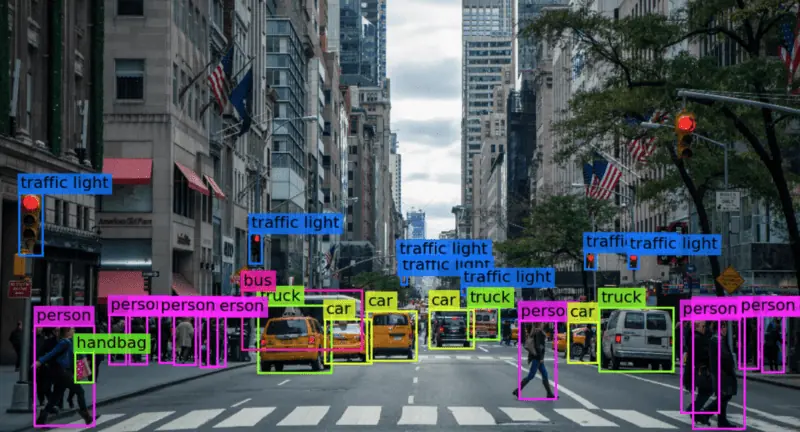
How does computer vision work?
Computer Vision is a subfield of artificial intelligence (AI) that focuses on enabling computers to interpret and understand visual information from the world. It involves the development of algorithms and systems that can process, analyze, and understand images, videos, or other visual data. The primary goal of computer vision is to replicate human vision capabilities, allowing machines to perform tasks that require visual perception.
An overview of how computer vision works:
- Image Acquisition: The first step in computer vision is to acquire digital images or videos from cameras or other sources. These images serve as the input data for computer vision systems.
- Pre-processing: Acquired images often need pre-processing to enhance their quality or to remove noise. This step may involve resizing, rotating, or adjusting brightness and contrast, among other techniques.
- Feature Extraction: The computer vision system extracts relevant features once the image is pre-processed. Features are distinctive points, edges, textures, or patterns that can help distinguish objects or scenes. Feature extraction techniques vary depending on the application and can range from simple edge detection to more complex deep learning algorithms.
- Object Detection and Recognition: With the relevant features extracted, the computer vision system can detect and recognize objects or patterns within the image. Object detection involves locating specific objects, while recognition consists in identifying the objects by class or category (e.g., cat, dog, car).
- Image Understanding and Interpretation: Beyond detecting and recognizing objects, computer vision systems can also interpret the relationships between objects, estimate their spatial properties, and analyze the overall scene. This understanding enables the system to make decisions or predictions based on visual data.
- Post-processing: Finally, the results of the computer vision analysis may need post-processing to refine or present the findings. This can include visualizing the detected objects or aggregating results over time.
Computer vision techniques have advanced significantly in recent years, mainly due to the development of deep learning and neural networks. Convolutional Neural Networks (CNNs), in particular, have proven highly effective in various computer vision tasks, such as image classification, object detection, and segmentation.
Computer vision applications are vast and include facial recognition, autonomous vehicles, robotics, medical imaging, video surveillance, and augmented reality, among many others.
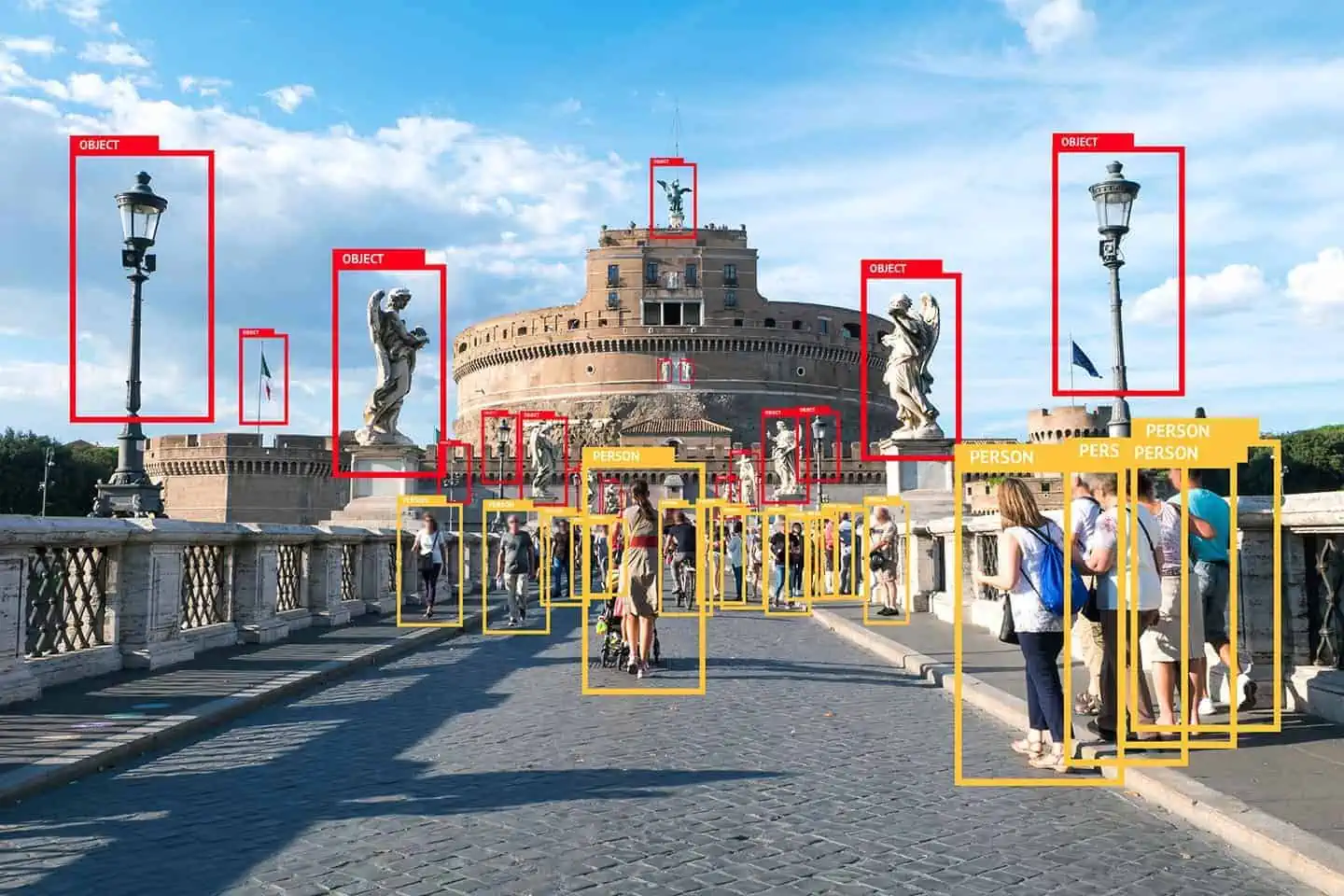
What are Advanced Application Uses of Computer Vision?
As the digital frontier expands, the utilization of computer vision technology permeates a myriad of application domains, transcending the conventional boundaries of facial recognition, image analysis automation, and object identification. This technology has manifested its potential in various avant-garde use cases, underscoring its profound implications for several dynamic spheres.
In the realm of autonomous vehicular navigation, computer vision has become instrumental, facilitating the design of vehicles capable of precisely interpreting their surroundings. In addition, the nascent arena of augmented and virtual reality development leans heavily on this technology, employing it to construct immersive environments that straddle the boundary between the real and the virtual world.
The medical industry stands to benefit immensely from computer vision as well. By leveraging this technology, medical imaging analytics brings forth the capacity to scrutinize MRI scans or X-rays meticulously, enhancing our ability to detect the faintest signals indicative of disease.
Moreover, integrating computer vision with augmented/virtual reality (AR/VR) technology significantly refines the user experience. Discerning the user's head positioning accurately ensures the virtual eyepieces render a faithful representation of the physical world.
In the retail sector, proprietors are capitalizing on computer vision to glean insights into consumer behavior subtly and unobtrusively. Simultaneously, the technology is being harnessed in the security industry, where computer vision-equipped cameras are employed to identify potential threats, thereby preemptively averting harm.
Meanwhile, the rise of predictive analytics devices has been fueled by the integration of computer vision. Such devices, equipped with this technology, can comprehend their environment, predict user behavior, make informed decisions, and tailor personalized experiences. A case in point is autonomous vehicles that leverage computer vision to navigate intricate environments while safely identifying other vehicles and pedestrians.
In summation, the potential of computer vision is far-reaching and versatile, paving the way for a future where machine perception rivals human vision.

Use Cases
Numerous enterprise applications and use cases for computer vision across various industries.
- Quality Control and Inspection: Computer vision can automate the manufacturing inspection process, ensuring product quality and consistency. By using cameras and machine learning algorithms, computer vision systems can quickly detect defects, irregularities, or inconsistencies in products, reducing the need for manual inspection and increasing efficiency.
- Retail: In retail environments, computer vision can be used for inventory management, shelf monitoring, and customer behavior analysis. Computer vision systems can help maintain stock levels and identify misplaced items by tracking products on shelves. It can also analyze customer movements and interactions to optimize store layouts and provide personalized recommendations.
- Healthcare: Computer vision has various applications in healthcare, including medical image analysis, diagnostics, and patient monitoring. By analyzing medical images such as X-rays, MRIs, or CT scans, computer vision algorithms can assist doctors in detecting anomalies, identifying diseases, and monitoring treatment progress. Additionally, computer vision can be used in patient monitoring systems to track vital signs, body positions, or facial expressions, providing valuable insights for healthcare professionals.
- Agriculture: Computer vision can be used for precision agriculture by analyzing images captured by drones or other remote sensing devices. These systems can help farmers monitor crop health, identify pests and diseases, and estimate yields, enabling them to make more informed decisions about crop management and resource allocation.
- Security and Surveillance: In security and surveillance applications, computer vision can be used for facial recognition, license plate recognition, and anomaly detection. These systems can help identify individuals, vehicles, or objects of interest, monitor restricted areas, and detect suspicious activities in real-time.
- Autonomous Vehicles: Computer vision plays a crucial role in developing autonomous vehicles. By processing and interpreting visual data from cameras, LiDAR, and other sensors, computer vision systems help self-driving cars understand their environment, detect obstacles, and make safe driving decisions.
- Document Analysis and Processing: Computer vision can be used to extract text and data from documents, such as invoices, contracts, or forms. Optical Character Recognition (OCR) technology can convert printed or handwritten text into digital format, enabling automated data entry, information extraction, and document classification.
- Bus Transportation: Passenger Counting, computer vision can be used to count the number of passengers boarding and alighting from buses, providing valuable data for transportation planning, optimizing bus schedules, and ensuring compliance with capacity regulations. Driver Monitoring, by analyzing video feeds from cameras installed in the driver's cabin, computer vision algorithms can monitor driver fatigue, distractions, or unsafe behavior, helping to improve overall road safety. Traffic Signal Compliance, computer vision systems can detect traffic signals and signs, ensuring that buses comply with traffic rules and avoid potential accidents.
- Rail Transportation: Track Inspection, computer vision can be used to automate the inspection of railway tracks, identifying defects, wear, or damage. This helps to improve safety, reduce maintenance costs, and minimize service disruptions. Train Carriage Monitoring, computer vision systems can monitor the interior and exterior of train carriages, detecting vandalism, graffiti, or other damages, facilitating faster response and maintenance. Passenger Flow Analysis, by analyzing video feeds from cameras installed at train stations, computer vision can help manage passenger flow, detect overcrowding, and identify bottlenecks, ensuring smooth and efficient operations.
- Shipping: Container Inspection, in ports, computer vision can be used to inspect shipping containers for damage or anomalies, as well as automate the process of reading container identification numbers, streamlining operations and reducing human error. Vessel Monitoring, computer vision systems can monitor vessels for potential hazards or maintenance issues, such as oil spills, hull damage, or equipment malfunctions, ensuring the safety and efficiency of maritime operations. Navigation Assistance, computer vision can assist with navigation, detecting and recognizing obstacles, other vessels, and navigational markers in real-time. This can help prevent collisions and improve overall maritime safety.
These are just a few use cases for computer vision. In addition, the technology's versatility allows it to be tailored to various industries and specific requirements, making it a valuable tool for businesses seeking to improve efficiency, accuracy, and decision-making.
Government Use Case
The role of computer vision in the government and defense space is to enhance security, intelligence, and operational efficiency.
- Surveillance and Security: Computer vision systems can analyze video feeds from cameras installed in public places, military installations, or border areas, helping to detect potential threats, track suspicious activities, and monitor crowd behavior. These systems can also be used for facial and license plate recognition, helping identify persons of interest and track vehicles.
- Intelligence and Reconnaissance: Computer vision can analyze satellite or aerial imagery for intelligence gathering and reconnaissance purposes. By detecting changes in the landscape, infrastructure, or other relevant features, these systems can help identify potential military installations, monitor troop movements, and track the development of weapons systems.
- Unmanned Aerial Vehicles (UAVs) and Drones: Computer vision plays a critical role in the operation of UAVs and drones for both surveillance and combat missions. By processing and interpreting visual data from onboard cameras and sensors, these systems can navigate autonomously, avoid obstacles, and accurately identify and track targets.
- Disaster Relief and Emergency Response: Government and defense agencies can use computer vision to assess the damage and analyze disaster-affected areas, such as those impacted by hurricanes, earthquakes, or floods. By processing satellite or aerial imagery, computer vision systems can help identify areas of greatest need, map safe routes for rescue operations, and monitor recovery efforts.
- Document Analysis and Processing: Computer vision techniques can be used to analyze and process various types of documents, such as passports, visas, or identification cards. Optical Character Recognition (OCR) technology can extract text and data from these documents, enabling automated data entry, information verification, and fraud detection.
- Biometric Authentication: Computer vision can be employed for biometric authentication, such as facial recognition, iris scanning, or fingerprint analysis. These systems can help enhance security at government facilities, airports, or other sensitive locations.
- Infrastructure Inspection and Maintenance: Government and defense agencies can use computer vision to inspect and monitor critical infrastructure, such as bridges, dams, power plants, or communication networks. By detecting signs of wear, damage, or potential threats, these systems can help ensure the safety and integrity of essential infrastructure.
These showcase the potential of computer vision in enhancing the capabilities and efficiency of government and defense operations. As computer vision technology continues to advance, it is expected to play an increasingly important role in supporting the mission-critical objectives of these agencies.
Let us help you
We are a click away. Our AI technology experts are eager to help you achieve success and excel in pursuing your next major endeavor.



